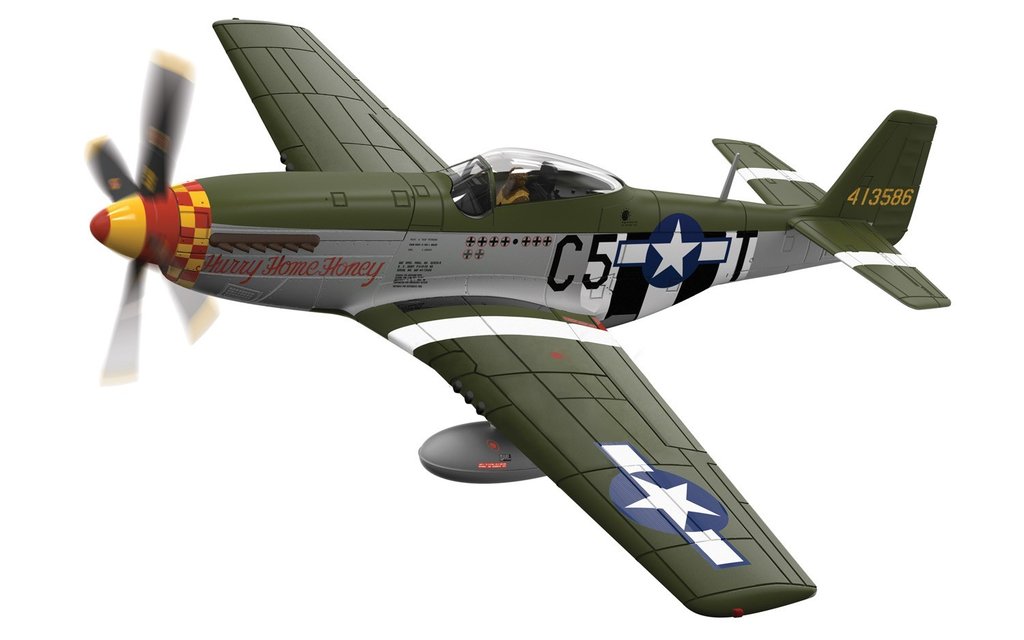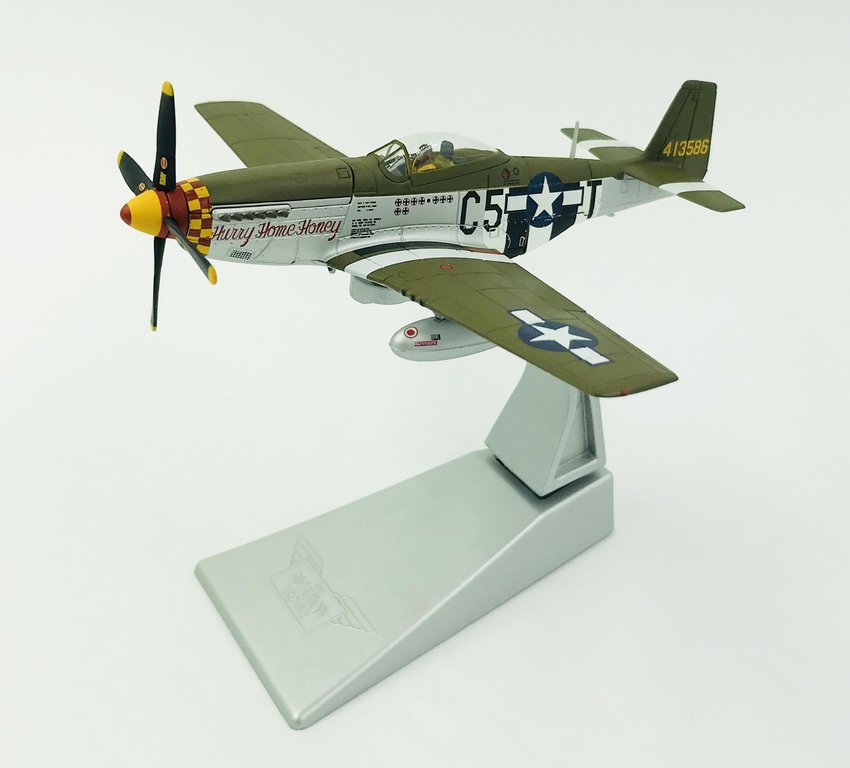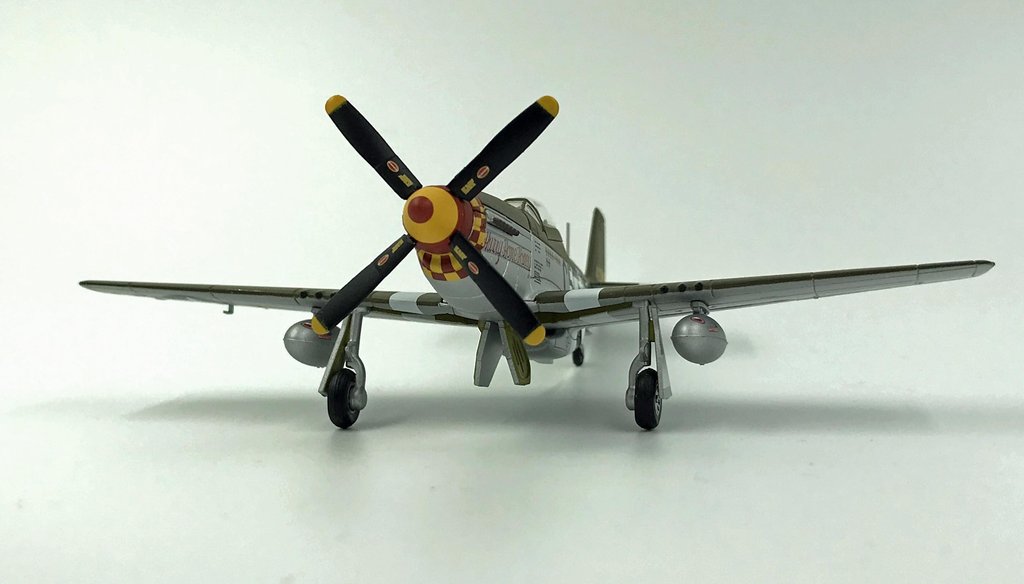North American P-51D Mustang – Hurry Home Honey, 364th FS, USAAF, Richard A ‘Pete’ Peterson, England, July 1944
Add to compare1 in stock
£49.99
1 in stock
Corgi Aviation 1/72 scale AA27705: North American P-51D Mustang #44-13586 Hurry Home Honey of 364th FS, 357th FG, USAAF, Richard A ‘Pete’ Peterson, RAF Leiston, England, July 1944. Limited Edition of 1,000 models.
Length 5.25 inches Wingspan 6.25 inches
The red and yellow checked noses of the USAAF 357th Fighter Group became a familiar sight in the skies above enemy occupied Europe in the final months of WWII and served both to reassure US Bomber crews that their ‘Little Friends’ were in attendance and to warn attacking Luftwaffe fighters that they were facing an elite fighting unit. The 357th were the first Eighth Air Force Fighter Group to receive the new North American P-51 Mustang towards the end of 1943 and immediately began their conversion training at Raydon airfield in East Anglia. Transferring to nearby Leiston, the unit became operational in February 1944 and were famously christened ‘The Yoxford Boys’ by British traitor and German propagandist Lord Haw-Haw, who greeted the arrival of these newly trained pilots with a forewarning of death and devastation at the hands of the Luftwaffe – how wrong he was. The Mustangs of the Yoxford Boys took a withering toll of Axis aircraft in the coming months, becoming the most successful P-51 air-to-air combat Unit in the Eighth Air Force by the end of WWII.
Designed to meet an RAF requirement for fighter-bomber and reconnaissance aircraft, the P-51 Mustang was first flown on October 26th, 1940. This versatile aircraft was capable of escorting bombers on long-range missions, engaging in dogfights, and dropping down to destroy German targets on the ground. At least eight versions of the P-51 were produced, but it was the definitive P-51D that gave the Mustang its classic warbird appearance. Britain and the US both tested the airframe with the Rolls-Royce Merlin engine, which gave the aircraft tremendous performance gains. The Truman Senate War Investigating Committee called the Mustang “the most aerodynamically perfect pursuit plane in existence.”
| Weight | 0.9 kg |
|---|








